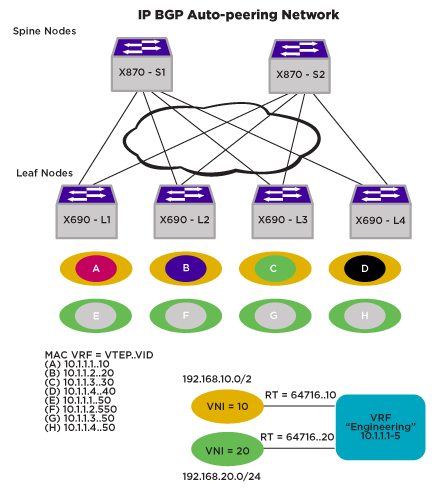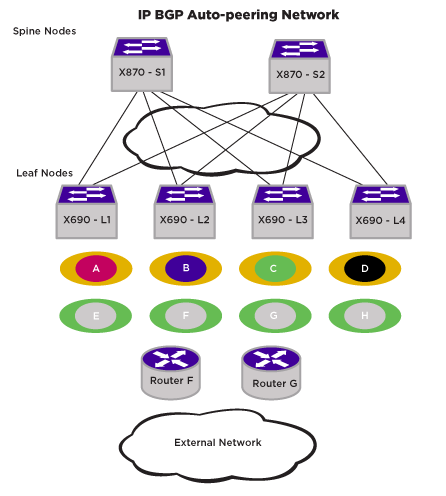Asymmetric Routing
AutoBGP nodes perform asymmetric routing for EVPN type 2 IP/MAC routes that are associated with a local virtual network identifier (VNI). They are installed into the FDB and ARP tables. They are not installed in the VRF RTM. Locally learned IP hosts using VRRP host-mobility may be installed in the VRF RTM. Asymmetric routing requires all VNIs to be created and associated with a VRF on all participating nodes.
Consider an AutoBGP network that supports an “Engineering” VRF consisting of two subnetted VNIs for hosts A through H, and VRFs are created with VNI mappings, using policy or other means. A host is placed into a VLAN on an attachment port of a device which corresponds to a VNI. In order to support asymmetric routing, all virtual networks are created on all nodes even if are no local host IP/MACs are discovered. If there is no VLAN assigned to a VNI, one is chosen and assigned an internal tag. The VLAN is given a loopback designation. If a host is later discovered, that is associated with another VLAN with same the VNI, the new VLAN replaces it and will have no loopback designation. Here, A on L1 routes to H on L4 as A-H are on two different VNIs. There are no local hosts on VNI 20 on L1, in which case, the loopback designation for the internally chosen VLAN enables asymmetric routing to take place. L4 then bridges to H. Troubleshooting can be achieved by looking into the FDBs and ARP tables on each node.

Consider hosts F and G that represent routers to external networks. Default static routes for hosts F and G are found as route entries in all nodes reachable on the local VLAN representing the VNI.


